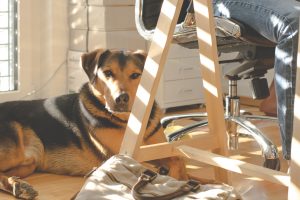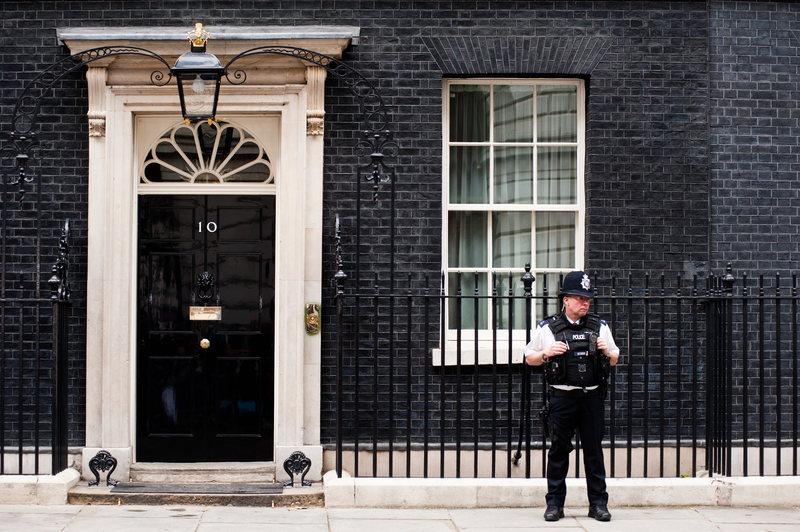Creative thinking: 3 exercises for creativity at work

Getting creative juices flowing can be difficult, especially today’s busy workplace. The ever-demanding yet, somehow, increasingly mundane reality of for many modern workers can stifle creativity, limit motivation, and induce the universally-feared writer’s block. If this sounds familiar, you are not alone. Many creatives experience these gaps in inspiration but, thankfully, there are plenty of solutions to strengthen your creative thinking and activate your imagination. Here are three ways to kick start your motivation, creative problem-solving and innovation.
Motivation
 Aim: Refresh the mind to kick it into action
Aim: Refresh the mind to kick it into action
How: Have an active mind break
Effort level: 5/10
Time commitment: 15 minutes
If your brain is overloaded it is much harder to think. Especially we are hoping to engage our creative mind. Our creativity wants to flow, not be pushed, so trying to make ourselves be more creative tends to end up with the opposite state of mind. However, allowing our mind to wander or do “nothing” can help to refresh and allow the creative thoughts to flow once again. This exercise is about actively doing something that turns off the conversation with our conscious mind, allowing our subconscious to come through.
The process
1. Choose an activity that allows you to ‘switch off’ your brain, whilst doing something else. Try Yoga, going for a walk somewhere peaceful, listening to relaxing music or even watching a comedian you find particularly funny. It needs to be something that is low on adrenalin as we want our breath to stay naturally relaxed.
2. Find a space to carry out your activity and let others know that you’ll be busy for the next 15 minutes as it won’t be as effective if you are disturbed.
3. Start doing your chosen activity and make sure that your only focus is on that activity. Allow your mind to wander. Do not try to think of anything in particular. The more you ‘switch off’ the better.
4. After 15 minutes, clear your mind and re-focus on the task in hand. At this point, your mind should feel brighter and refreshed.
Problem-solving
 Aim: Make an effective plan
Aim: Make an effective plan
How: Work backward from your goal
Effort level: 7/10
Time commitment: 45 minutes
Sometimes it’s hard to sit down and make a plan. You may know what you would like to achieve but don’t have a clue how to go about doing so. Getting from ‘Point A’ to ‘Point B’ can seem like a big jump but the trick is to work backward from ‘Point B’ to ‘Point A’. You may need a few sheets of paper for this one!
The process
1. Identify your goal and how long it will take you to achieve it. Write this at the very top of your paper in the centre.
2. Next, think about what needs to happen just prior to achieving your goal. Say to yourself ‘In order to (Insert Goal Here) I will have needed to: (Insert Penultimate Step Here).’ Write both your goal and the penultimate step down and draw a line to connect the two followed by the timing in which you will have to achieve it.
3. Repeat the above step and keep on going until you reach the present. Remember you are working backward.
Here is a simplified example:
i. Goal: Meet my friend, Dave, in Australia. Time: 3 months’ time
ii. In order to do that I will have needed to have: Booked the flights. Time: 2 months’ time
iii. In order to do that I will have needed to have: Booked time off with work. Time: 2 weeks’ time
iv. In order to do that I will have needed to have: Checked with my manager that she’s happy to support the annual leave. Time: 1 week’s time.
v. In order to do that I will have needed to: check with Dave exactly when he’s about and look at the work calendar to see if anyone’s on leave. Time: Now
Like articles like this one? Check out our weekly newsletter #ThoughtfulThursday for the most thought-provoking Bookboon blogs.
–
Innovation
 Aim: Switch out your work ‘persona’
Aim: Switch out your work ‘persona’
How: Take on someone else’s animal
Effort level: 7/10
Time commitment: 1 day
The process
You have probably been asked at some point ‘If you were an animal, what would you be?’ This is a fun thought exercise but is also a great way to determine your working style. No matter what animal you most identify with it is possible and beneficial to adapt your work persona to different animals and recognise what happens when you adopt a different approach.
Below is a list of animals and their work characteristics. Read through and identify which you most relate to and then, at random, pick one that you don’t relate to. Spend a day ‘being’ that animal and see what happens when you work in a different way. This is a great, fun way to see what happens when we discard old habits and work in a new way. It’s even more effective when a few people are taking part.
Monkey
Inquisitive, fun and sociable. Prefers to be part of a team than to lead one. Brings energy but can get bored if left to work alone for too long.
Be one: Take time to inquire about others. Offer to assist your co-workers. Invite ideas from your colleagues. Solve a problem or play a game with others.
Badger
Conscientious and clever with a good eye for detail. Likes routine and dislikes disorder.
Be one: Find a quiet place to work where you won’t be distracted. Plan and prepare before you begin. Tidy your workspace and organise your work. Double check everything when you have finished. Work on the detail of a project that you may have overlooked so far.
Fox
Agile thinker. Likes to know a team is there but often works autonomously. Charming but can be impatient.
Be one: Look at a problem in a completely new way. Work somewhere other than your desk. Connect with others for input and feedback, otherwise work alone. Delegation is allowed. Invite someone for lunch/after work drinks, tell them about your project and pick their brain!
Ant
Always active and getting things done. Happy to do work that will help the team despite getting little recognition. Important in making things run smoothly but not overly inventive.
Be one: Pick a ‘doing’ task and do it. Be happy to take direction with little deliberation or complaint. Work hard, this is for the good of the team.
Dog
Loyal, bright and active. Part of the team and likes to be valued. Takes initiative once let off the leash, otherwise happy to toe the line. Works best with regular recognition/reward.
Be one: Do a task that has a clear pay off/reward for you and the team. Keep at it until you reach your objective. Be friendly and outgoing. Actively seek out involvement from others who can help you achieve your goal.




